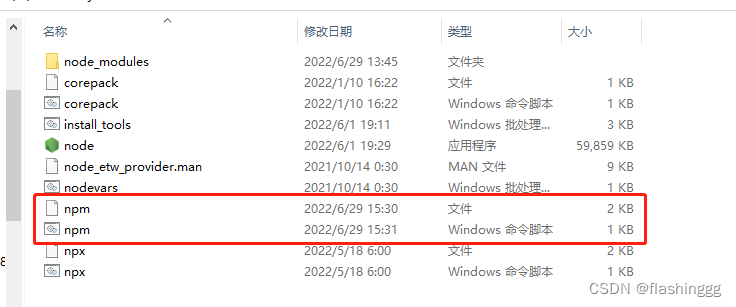当前位置:网站首页>PriorityQueue的用法和底层实现原理
PriorityQueue的用法和底层实现原理
2022-07-01 18:35:00 【全栈程序员站长】
大家好,又见面了,我是你们的朋友全栈君。
先讲使用,再讲原理
队列是遵循先进先出(First-In-First-Out)模式的,但有时需要在队列中基于优先级处理对象。
举两个例子:
- 作业系统中的调度程序,当一个作业完成后,需要在所有等待调度的作业中选择一个优先级最高的作业来执行,并且也可以添加一个新的作业到作业的优先队列中。
- 每日交易时段生成股票报告的应用程序中,需要处理大量数据并且花费很多处理时间。客户向这个应用程序发送请求时,实际上就进入了队列。我们需要首先处理优先客户再处理普通用户。在这种情况下,Java的PriorityQueue(优先队列)会很有帮助。
PriorityQueue类在Java1.5中引入并作为 Java Collections Framework 的一部分。PriorityQueue是基于优先堆的一个无界队列,这个优先队列中的元素可以默认自然排序或者通过提供的Comparator(比较器)在队列实例化的时排序。
优先队列不允许空值,而且不支持non-comparable(不可比较)的对象,比如用户自定义的类。优先队列要求使用Java Comparable和Comparator接口给对象排序,并且在排序时会按照优先级处理其中的元素。
优先队列的头是基于自然排序或者Comparator排序的最小元素。如果有多个对象拥有同样的排序,那么就可能随机地取其中任意一个。当我们获取队列时,返回队列的头对象。
优先队列的大小是不受限制的,但在创建时可以指定初始大小。当我们向优先队列增加元素的时候,队列大小会自动增加。
PriorityQueue是非线程安全的,所以Java提供了PriorityBlockingQueue(实现BlockingQueue接口)用于Java多线程环境。
我们有一个用户类Customer,它没有提供任何类型的排序。当我们用它建立优先队列时,应该为其提供一个比较器对象。
Customer.java
1 2 3 4 5 6 7 8 9 10 11 12 13 14 15 16 17 18 19 20 21 | package com.journaldev.collections; public class Customer { private int id; private String name; public Customer(int i, String n){ this.id=i; this.name=n; } public int getId() { return id; } public String getName() { return name; } } |
|---|
我们使用Java随机数生成随机用户对象。对于自然排序,我们使用Integer对象,这也是一个封装过的Java对象。
下面是最终的测试代码,展示如何使用PriorityQueue:
PriorityQueueExample.java
1 2 3 4 5 6 7 8 9 10 11 12 13 14 15 16 17 18 19 20 21 22 23 24 25 26 27 28 29 30 31 32 33 34 35 36 37 38 39 40 41 42 43 44 45 46 47 48 49 50 51 52 53 54 55 56 57 58 | package com.journaldev.collections; import java.util.Comparator; import java.util.PriorityQueue; import java.util.Queue; import java.util.Random; public class PriorityQueueExample { public static void main(String[] args) { //优先队列自然排序示例 Queue<Integer> integerPriorityQueue = new PriorityQueue<>(7); Random rand = new Random(); for(int i=0;i<7;i++){ integerPriorityQueue.add(new Integer(rand.nextInt(100))); } for(int i=0;i<7;i++){ Integer in = integerPriorityQueue.poll(); System.out.println("Processing Integer:"+in); } //优先队列使用示例 Queue<Customer> customerPriorityQueue = new PriorityQueue<>(7, idComparator); addDataToQueue(customerPriorityQueue); pollDataFromQueue(customerPriorityQueue); } //匿名Comparator实现 public static Comparator<Customer> idComparator = new Comparator<Customer>(){ @Override public int compare(Customer c1, Customer c2) { return (int) (c1.getId() - c2.getId()); } }; //用于往队列增加数据的通用方法 private static void addDataToQueue(Queue<Customer> customerPriorityQueue) { Random rand = new Random(); for(int i=0; i<7; i++){ int id = rand.nextInt(100); customerPriorityQueue.add(new Customer(id, "Pankaj "+id)); } } //用于从队列取数据的通用方法 private static void pollDataFromQueue(Queue<Customer> customerPriorityQueue) { while(true){ Customer cust = customerPriorityQueue.poll(); if(cust == null) break; System.out.println("Processing Customer with ID="+cust.getId()); } } } |
|---|
注意我用实现了Comparator接口的Java匿名类,并且实现了基于id的比较器。
当我运行以上测试程序时,我得到以下输出:
1 2 3 4 5 6 7 8 9 10 11 12 13 14 | Processing Integer:9 Processing Integer:16 Processing Integer:18 Processing Integer:25 Processing Integer:33 Processing Integer:75 Processing Integer:77 Processing Customer with ID=6 Processing Customer with ID=20 Processing Customer with ID=24 Processing Customer with ID=28 Processing Customer with ID=29 Processing Customer with ID=82 Processing Customer with ID=96 |
|---|
从输出结果可以清楚的看到,最小的元素在队列的头部因而最先被取出。如果不实现Comparator,在建立customerPriorityQueue时会抛出ClassCastException。
1 2 3 4 5 6 7 | Exception in thread "main" java.lang.ClassCastException: com.journaldev.collections.Customer cannot be cast to java.lang.Comparable at java.util.PriorityQueue.siftUpComparable(PriorityQueue.java:633) at java.util.PriorityQueue.siftUp(PriorityQueue.java:629) at java.util.PriorityQueue.offer(PriorityQueue.java:329) at java.util.PriorityQueue.add(PriorityQueue.java:306) at com.journaldev.collections.PriorityQueueExample.addDataToQueue(PriorityQueueExample.java:45) at com.journaldev.collections.PriorityQueueExample.main(PriorityQueueExample.java:25) |
|---|
实现原理:
Java中PriorityQueue通过二叉小顶堆实现,可以用一棵完全二叉树表示(任意一个非叶子节点的权值,都不大于其左右子节点的权值),也就意味着可以通过数组来作为PriorityQueue的底层实现。
上图中我们给每个元素按照层序遍历的方式进行了编号,如果你足够细心,会发现父节点和子节点的编号是有联系的,更确切的说父子节点的编号之间有如下关系:
leftNo = parentNo*2+1
rightNo = parentNo*2+2
parentNo = (nodeNo-1)/2
通过上述三个公式,可以轻易计算出某个节点的父节点以及子节点的下标。这也就是为什么可以直接用数组来存储堆的原因。
PriorityQueue的peek()和element操作是常数时间,add(), offer(), 无参数的remove()以及poll()方法的时间复杂度都是log(N)。
方法剖析
add()和offer()
add(E e)和offer(E e)的语义相同,都是向优先队列中插入元素,只是Queue接口规定二者对插入失败时的处理不同,前者在插入失败时抛出异常,后则则会返回false。对于PriorityQueue这两个方法其实没什么差别。
新加入的元素可能会破坏小顶堆的性质,因此需要进行必要的调整。
//offer(E e)
public boolean offer(E e) {
if (e == null)//不允许放入null元素
throw new NullPointerException();
modCount++;
int i = size;
if (i >= queue.length)
grow(i + 1);//自动扩容
size = i + 1;
if (i == 0)//队列原来为空,这是插入的第一个元素
queue[0] = e;
else
siftUp(i, e);//调整
return true;
}上述代码中,扩容函数grow()类似于ArrayList里的grow()函数,就是再申请一个更大的数组,并将原数组的元素复制过去,这里不再赘述。需要注意的是siftUp(int k, E x)方法,该方法用于插入元素x并维持堆的特性。
//siftUp()
private void siftUp(int k, E x) {
while (k > 0) {
int parent = (k - 1) >>> 1;//parentNo = (nodeNo-1)/2
Object e = queue[parent];
if (comparator.compare(x, (E) e) >= 0)//调用比较器的比较方法
break;
queue[k] = e;
k = parent;
}
queue[k] = x;
}新加入的元素x可能会破坏小顶堆的性质,因此需要进行调整。调整的过程为:从k指定的位置开始,将x逐层与当前点的parent进行比较并交换,直到满足x >= queue[parent]为止。注意这里的比较可以是元素的自然顺序,也可以是依靠比较器的顺序。
element()和peek()
element()和peek()的语义完全相同,都是获取但不删除队首元素,也就是队列中权值最小的那个元素,二者唯一的区别是当方法失败时前者抛出异常,后者返回null。根据小顶堆的性质,堆顶那个元素就是全局最小的那个;由于堆用数组表示,根据下标关系,0下标处的那个元素既是堆顶元素。所以直接返回数组0下标处的那个元素即可。
代码也就非常简洁:
//peek()
public E peek() {
if (size == 0)
return null;
return (E) queue[0];//0下标处的那个元素就是最小的那个
}remove()和poll()
remove()和poll()方法的语义也完全相同,都是获取并删除队首元素,区别是当方法失败时前者抛出异常,后者返回null。由于删除操作会改变队列的结构,为维护小顶堆的性质,需要进行必要的调整。
代码如下:
public E poll() {
if (size == 0)
return null;
int s = --size;
modCount++;
E result = (E) queue[0];//0下标处的那个元素就是最小的那个
E x = (E) queue[s];
queue[s] = null;
if (s != 0)
siftDown(0, x);//调整
return result;
}上述代码首先记录0下标处的元素,并用最后一个元素替换0下标位置的元素,之后调用siftDown()方法对堆进行调整,最后返回原来0下标处的那个元素(也就是最小的那个元素)。重点是siftDown(int k, E x)方法,该方法的作用是从k指定的位置开始,将x逐层向下与当前点的左右孩子中较小的那个交换,直到x小于或等于左右孩子中的任何一个为止。
//siftDown()
private void siftDown(int k, E x) {
int half = size >>> 1;
while (k < half) {
//首先找到左右孩子中较小的那个,记录到c里,并用child记录其下标
int child = (k << 1) + 1;//leftNo = parentNo*2+1
Object c = queue[child];
int right = child + 1;
if (right < size &&
comparator.compare((E) c, (E) queue[right]) > 0)
c = queue[child = right];
if (comparator.compare(x, (E) c) <= 0)
break;
queue[k] = c;//然后用c取代原来的值
k = child;
}
queue[k] = x;
}remove(Object o)
remove(Object o)方法用于删除队列中跟o相等的某一个元素(如果有多个相等,只删除一个),该方法不是Queue接口内的方法,而是Collection接口的方法。由于删除操作会改变队列结构,所以要进行调整;又由于删除元素的位置可能是任意的,所以调整过程比其它函数稍加繁琐。具体来说,remove(Object o)可以分为2种情况:1. 删除的是最后一个元素。直接删除即可,不需要调整。2. 删除的不是最后一个元素,从删除点开始以最后一个元素为参照调用一次siftDown()即可。此处不再赘述。
具体代码如下:
//remove(Object o)
public boolean remove(Object o) {
//通过遍历数组的方式找到第一个满足o.equals(queue[i])元素的下标
int i = indexOf(o);
if (i == -1)
return false;
int s = --size;
if (s == i) //情况1
queue[i] = null;
else {
E moved = (E) queue[s];
queue[s] = null;
siftDown(i, moved);//情况2
......
}
return true;
}参考文献:
https://www.cnblogs.com/CarpenterLee/p/5488070.html
http://www.importnew.com/6932.html
发布者:全栈程序员栈长,转载请注明出处:https://javaforall.cn/130832.html原文链接:https://javaforall.cn
边栏推荐
- 信度系数低怎么办?信度系数具体怎么算?
- Static timing analysis (STA) in ic/fpga design
- Why do independent website sellers start to do social media marketing? The original customer conversion rate can be improved so much!
- LeetCode-21合并两个有序链表
- MySQL connection tools
- Leetcode-21 combines two ordered linked lists
- AI 训练速度突破摩尔定律;宋舒然团队获得RSS 2022最佳论文奖
- R language uses follow up of epidisplay package Plot function visualizes the longitudinal follow-up map of multiple ID (case) monitoring indicators, and uses n.of The lines parameter specifies the num
- Relational database management system of easyclick
- R语言使用epiDisplay包的aggregate函数将数值变量基于因子变量拆分为不同的子集,计算每个子集的汇总统计信息
猜你喜欢

How to manage 1000 anchors by one person?

Leetcode-141环形链表

力扣每日一题-第32天-589.N×树的前序遍历

A database editing gadget that can edit SQLite database. SQLite database replaces fields. SQL replaces all values of a field in the database

Lumiprobe non fluorescent alkyne EU (5-ethynyluridine)

GAMES202作业0-环境搭建过程&解决遇到的问题

Halcon image calibration enables subsequent image processing to become the same as the template image

Salesmartly has some tricks for Facebook chat!

1、《创建您自己的NFT集合并发布一个Web3应用程序来展示它们》什么是NFT

About enterprise middle office planning and it architecture microservice transformation
随机推荐
Leetcode203 移除链表元素
Using OpenSSL encryption to rebound shell traffic
A database editing gadget that can edit SQLite database. SQLite database replaces fields. SQL replaces all values of a field in the database
力扣每日一题-第32天-589.N×树的前序遍历
Qt中的QFile读写文件操作
Blue Bridge Cup real question: score statistics
Leetcode-21 combines two ordered linked lists
GAMES202作业0-环境搭建过程&解决遇到的问题
Calculation of intersection of two line segments
R language uses follow up of epidisplay package Plot function visualizes the longitudinal follow-up map of multiple ID (case) monitoring indicators, and uses n.of The lines parameter specifies the num
Weekly recommended short videos: be alert to the confusion between "phenomena" and "problems"
PMP daily three questions (February 15, 2022)
Search 2D matrix 2
Leetcode-141 circular linked list
Sanfeng cloud 0215 I often use
How to change guns for 2D characters
LeetCode-21合并两个有序链表
Five degrees easy chain enterprise app is newly upgraded
12种数据量纲化处理方式
Financial judgment questions